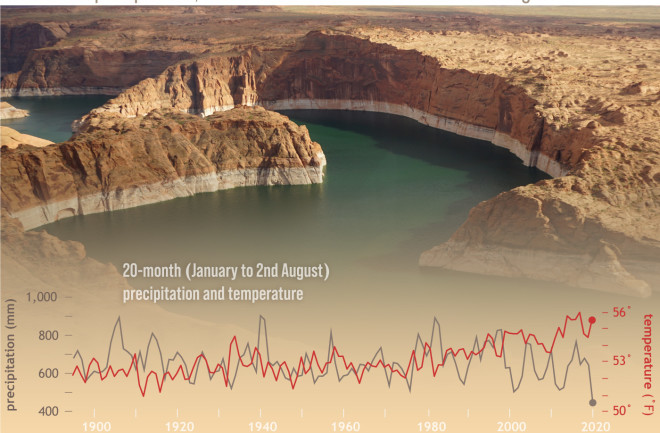
Over the 20-month period from January 2020 through August 2021, the U.S. Southwest received the lowest total precipitation and had the third-highest daily average temperatures since 1895. In this graph, cumulative precipitation for all 20-month periods since 1895 is shown by the brown line, and average temperature is shown in red. (Credit: Climate.gov. Photo of low water levels in Lake Powell on August 13, 2017, by Flickr user Edwin van Buuringen, used under a Creative Commons license.)
If you're one of the more than 60 million people living in the U.S. Southwest, you probably have at least an impression of the unusually dry and warm conditions that have drained reservoirs and spurred raging wildfires in recent years.
Now, a new report shows just how bad it has been.


